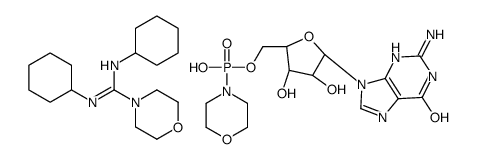Phosphate release contributes to the rate-limiting step for unwinding by an RNA helicase.
Qixin Wang, Jamie J Arnold, Akira Uchida, Kevin D Raney, Craig E Cameron
文献索引:Nucleic Acids Res. 38 , 1312-24, (2010)
全文:HTML全文
摘要
RNA helicases function in numerous aspects of RNA biology. These enzymes are RNA-stimulated ATPases that translocate on RNA and unwind or remodel structured RNA in an ATP-dependent fashion. How ATP and the ATPase cycle fuel the work performed by helicases is not completely clear. The hepatitis C virus RNA helicase, NS3, is an important model system for this class of enzymes. NS3 binding to a single-/double-strand RNA or DNA junction leads to ATP-independent melting of the duplex and formation of a complex capable of ATP-dependent unwinding by using a spring-loaded mechanism. We have established an RNA substrate for NS3 that can be unwound in a single sub-step. Our studies are consistent with a model in which a single ATP binding and/or hydrolysis event sets the unwinding spring and phosphate dissociation contributes to release of the spring, thereby driving the power stroke used for unwinding.
相关化合物
| 结构式 | 名称/CAS号 | 分子式 | 全部文献 |
|---|---|---|---|
 |
鸟苷5'-单磷酸吗啉酸酯4-吗啉-N,N'-二环己基碳二亚胺盐
CAS:7361-07-1 |
C31H52N9O9P |
|
Glucose recognition proteins for glucose sensing at physiolo...
2014-07-18 [ACS Chem. Biol. 9(7) , 1595-602, (2014)] |
|
Bacterial autoinducer-2 detection via an engineered quorum s...
2015-03-03 [Anal. Chem. 87(5) , 2608-14, (2015)] |
|
Antibody Arrays for Quality Control of Mesenchymal Stem Cell...
2015-08-05 [ACS Appl. Mater. Interfaces 7 , 16828-36, (2015)] |
|
1H-Tetrazole as Catalyst in Phosphomorpholidate Coupling Rea...
2001-01-01 [J. Org. Chem. 62 , 2144-2147, (1997)] |
|
Synthesis of uridine 5'-(2-acetamido-2,4-dideoxy-4-fluoro-al...
1988-12-31 [Carbohydr. Res. 184 , 77-85, (1988)] |